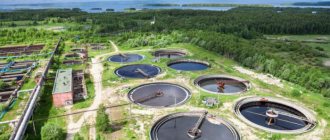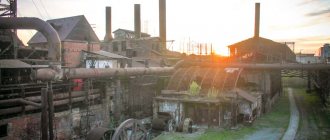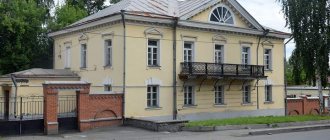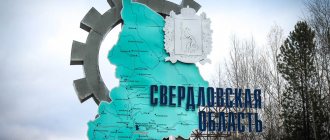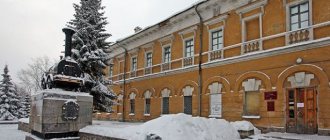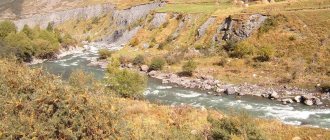Geographical characteristics
The city of Nizhny Tagil is located almost on the very border separating Europe from Asia. The point of intersection of two continents is only about 20 kilometers away. And to the heart of the Urals - Yekaterinburg - 150 km. Belongs to the Sverdlovsk region. The Nizhny Tagil index is light and memorable. It starts with 622 and then the post office code is added to it.
The city is located in a mountainous area - on the middle section of the eastern slope of the Ural ridge. Its area is just over 297 square kilometers. In the urban area there are three mountains that smoothly turn into the plains of the West Siberian Lowland in the east.
Nizhny Tagil is not deprived of water resources. Fourteen rivers flow through it! The largest of them is called Tagil.
Near the city there are the largest deposits of ores - iron and magnetite. Pyrite, limestone and some other minerals are also mined here.
The climate in these places is harsh - Siberian or, in scientific terms, sharply continental. A cold winter, lasting six months, and a short, cool summer (what can be called heat lasts at most two or three weeks). It rains almost constantly. The weather in Nizhny Tagil in spring is unusual - within one day the thermometer can “jump” twenty degrees up or down. And the average annual temperature does not exceed 1.7 degrees.
Geography
The city is located on the eastern slope of the Ural Mountains, 20-25 km from the conventional border of Europe and Asia at an altitude of 200 m above sea level. The western border of the city runs along the Merry Mountains mountain range of the Urals.
The area of the city of Nizhny Tagil is 298.47 km². The area of the urban district (since April 1, 2008, after the inclusion of 22 towns, villages and villages that voted in a referendum to join) is 4108 km².
To the west of the city lies the main watershed of the Ural Range with individual hills and mountain ranges stretching from north to south. This part of the Main Ural Range is called the Merry Mountains. The average height of the mountains is 400-500 meters, and only a few peaks rise above 700 m - Mount Belaya (712 m), Starik-Kamen (755 m), Shirokaya (746 m). Steep, steep stone peaks - “shikhans”, crowned with rocks - “remnants”, create a unique landscape of the Middle Urals. Right within the city limits there are the Bear-Kamen, Vysokaya mountains with a quarry on the northern slope, Dolgaya with a ski jump complex on the eastern slope, Goly Kamen, Tselovalnikova, Palyonaya, Pikhtovye Mountains, the main symbol of the city, Fox Mountain with a watchtower on the top. To the east of the city, the relief gradually levels out and turns into the West Siberian Lowland.
There are no powerful waterways in the area. The main river, Tagil, with numerous tributaries, flows into the Tura River of the Ob-Irtysh basin. The Tagil pond stretches for 16 km, its greatest width is 1.5 km, and its depth is up to 12 meters. The second big river of Nizhny Tagil is the Vyya. Within the city limits, it is artificially expanded and, like Tagil, is a long elongated pond - Vyisky Pond. Within the city, in the Lebyazhka area, the Vyya flows into the Tagil.
In addition to Tagil and Vyya, 13 rivers and streams flow within the city: Barancha, Rush, Bolshaya Kushva, Malaya Kushva, Leba, Vatikha, Lebyazhka, Vyazovka, Ezhovaya, Galyanka, Rudyanka, Cheremshanka, Prikazchitsa, Olkhovka, Chernaya Katabka.
To this day, the city uses a water supply system developed by the Demidovs.
Climate
Nizhny Tagil is located in a zone of temperate continental climate with characteristic sharp variability of weather conditions and well-defined seasons. The average annual air temperature in Nizhny Tagil is +1.7 °C, the absolute maximum is +37 °C, the absolute minimum is −52 °C.
- Average annual air temperature: 1.7 °C
- Relative humidity: 75.1%
- Average wind speed: 2.5 m/s
History of Nizhny Tagil
Nizhny Tagil officially keeps its chronicle since 1722, although “life began” on its territory much earlier. For example, it is known that at the end of the sixteenth century Ermak stood here with his army.
More than a century later, a tidbit of Ural territory was given by Peter the Great to the oligarchs by today's standards - the Demidov family, who built an “iron-making” plant on land rich in minerals. With this step, the sovereign pursued the goal of strengthening Russia in military-technical terms.
The first smelting of iron dates back to October 8, 1722. It is this day that historians consider the beginning of the existence of Nizhny Tagil.
The Vyysky copper smelter was the largest in the Russian Empire. But the village around it remained small, quiet, and unprepossessing for a long time. Apart from the uprising of Pugachev and Yulaev, as well as the hot “red-white” battles during the civil war, this area is practically unremarkable in historical terms.
After the revolution, the settlement began to develop more actively. The construction of new plants and factories required the expansion of infrastructure, and in 1931 Nizhny Tagil was given the status of a city.
During the Second World War, like all of Russia, Nizhny Tagil made every effort to defeat the enemy. The Ural industrial center became a haven for Soviet metallurgy. The legendary T-72 tank was produced here.
By the end of the eighties, the city had grown greatly, increasing by as much as 70% in just 50 years.
History and features of the city
The first mention of Magnit Mountain (Mount Vysokaya) dates back to the second half of the 17th century, but systematic mining of ore began only in 1721. Akinfiy Nikitich Demidov (1678–1745) built two factories here: the Vyisky copper smelting plant (launched on October 23, 1722) and the Nizhny Tagil iron-smelting and iron-making plant (launched on December 25, 1725).
The launch of the Vyysky plant is considered the founding date of the city. In 1736, due to the low copper content in the ore, the enterprise became an iron-making enterprise. After the discovery of the Mednorudyanskoye deposit at the foot of the Vysokaya Mountain in 1814, the Vyysky plant again began smelting copper in the 1820s.
Interesting fact: copper smelted at the Vyysky plant was used in the manufacture of the famous Statue of Liberty, which was donated by France in 1889 for the 100th anniversary of the founding of the United States. The last copper smelting at the Vyisky plant took place in 1916.
On Vyya stood the Vyisko-Nikolaevskaya Church, consecrated in 1846. It served as the Demidov family tomb. In 1875, the ashes of P.N. were transported here. Demidov along with a large marble tombstone. In the altar there was a tabernacle made of a single piece of malachite weighing about 7 pounds. The church was closed in the 1930s and later demolished. Marble crucifix from the tombstone of P.N. Demidov was transferred to the local history museum.
The Nizhny Tagil iron smelting and ironworks plant stood 3 versts from Vyisky. It was built on the Tagil River near Mount Vysokaya. This mountain in the upper part consisted of pure iron ore. The enterprise was built as the most powerful iron smelter in the Urals. Launched in 1725, the blast furnace was the largest in Europe at that time. The Nizhny Tagil plant was the center of the Demidovs' mining empire. The finished products were transported to the Utkinskaya pier and sent in barges along the Chusovaya River to Central Russia.
Over centuries of development, a large quarry was formed on the site of Mount Vysokaya. A popular saying was born: “There was a high mountain, but the hole became deep.” In Soviet times, ore mining began underground - in mines. The Magnetite mine reached a depth of 610 m and is still in operation. The Vysokogorskoe iron ore deposit is the oldest and largest in the Urals.
In the 18th century, the Nizhny Tagil plant became one of the largest factories in Europe with advanced production technology. Tagil iron with the Demidov brand “Old Sable” was readily bought by England, Holland, France and Sweden.
In 1806, Nizhny Tagil became the center of the Nizhny Tagil Mining District.
In 1834–35, rich deposits of malachite were discovered at the Mednorudyanskoye deposit. Among other things, a unique monolith weighing almost 40 tons was mined. Malachite was used to decorate the internal columns of St. Isaac's Cathedral, the Malachite Hall of the Winter Palace in St. Petersburg, and huge vases, bowls, tabletops and other products were made.
In 1876, the Gornozavodskaya Railway passed through Nizhny Tagil. In 1897, a narrow-gauge railway was built connecting Nizhny Tagil with the Chernoistochinsky, Visimo-Shaitansky and Visimo-Utkinsky plants. The Nizhny Tagil plant was visited by many famous people, including the Tsarevich, the future Emperor Alexander II in 1837.
Nizhny Tagil is associated with the names of many talented people. In 1834, at the Vyysky plant, serf inventors Efim Alekseevich and Miron Efimovich Cherepanov built the first steam locomotive in Russia to transport ore from the Mednorudyanskoye deposit to the plant. Egor Grigorievich Kuznetsov-Zhepinsky was also distinguished by his talents, making “musical droshky” and an original astronomical clock. In addition, according to legend, it was the Nizhny Tagil artisan Efim Artamonov who designed the first Russian bicycle at the beginning of the 19th century.
Nizhny Tagil is the birthplace of the Russian painted iron tray. The Khudoyarov artists became especially famous in this matter.
At the beginning of the 20th century, in terms of population (more than 30 thousand people) and industrial production, Nizhny Tagil was second only to two cities in the Perm province - Yekaterinburg and Perm. However, it received city status only in 1919.
“The huge factory village of Nizhny Tagil, corresponding to the provincial city in terms of the number of inhabitants, makes a very special impression on a person who has not yet become accustomed to the type of what is called a “factory” in the Urals,” wrote D.I., who visited the Nizhny Tagil plant in 1899. Mendeleev.
In the 1930s, large-scale industrial construction began in Nizhny Tagil. The Uralvagonzavod, the Novotagil Metallurgical Plant (later NTMK), the Plastics Plant, and the Coke and Chemical Combine were built. NTMK has become one of the largest ferrous metallurgy plants in Russia - an enterprise with a closed metallurgical cycle, producing cast iron, steel, rolled products and refractories.
During the Great Patriotic War, Nizhny Tagil received a number of evacuated enterprises, and the smelting of armor steel was mastered. During the war, NTMZ produced about 30% of all armor steel in the USSR. In 1941–45, 35 thousand T-34 tanks were manufactured in Nizhny Tagil.
In Soviet times, the old Demidov plant was named after V.V. Kuibysheva. The last pig iron in his blast furnace shop was received on October 6, 1987, after which the enterprise closed. A museum-factory was created here.
The leading enterprises of the city at present are: Nizhny Tagil Metallurgical Plant (NTMK), Uralvagonzavod, Vysokogorsky Mining and Processing Plant, Uralkhimplast, Nizhny Tagil Metal Structures Plant. UVZ cars travel on railways throughout the country. Weapons are also produced in Tagil. Until 2015, a major arms exhibition, Russia Arms Expo, was held at the Staratel training ground of the Metal Testing Institute, until it was moved to the Moscow region.
As a consequence of developed industrial production, the environmental situation in Nizhny Tagil leaves much to be desired. This city has long been famous for its colored smoke. Now, after the closure of some industries and modernization, others have gotten better, but are still far from normal. You understand this especially clearly when you drive along Vagonka and experience a sore throat from the toxic smoke. Another disadvantage of Nizhny Tagil: there are many prisons and colonies, which negatively affects the crime situation. I don’t want to live in this city, but it’s definitely worth visiting.
The area of the city is 298.47 km². Nizhny Tagil has three districts: Dzerzhinsky, Leninsky, Tagilstroevsky. The population of Nizhny Tagil is 354 thousand people (2018) and continues to decline. For comparison, in 1989, about 440 thousand people lived here.
Population
One of the most important characteristics of any city is its population. Nizhny Tagil is home to 356,744 people (2015 data). Over the past few decades, the demographic picture here has been depressing - mortality exceeded birth rates, people were leaving. If we remember that back in 1988 the population of Nizhny Tagil was 425 thousand, it turns out that the city has lost almost 70 thousand people in forty years.
Today the situation has stabilized somewhat - at least, this is what local authorities say. The growth of the birth rate is facilitated by the practice of allocating maternity capital, and mortality is reduced by improving the environmental situation and improving the quality of medical services.
What do the people do here? Nizhny Tagil, as you know, is a city of large industrial enterprises. Therefore, the bulk of Tagil residents are workers. The city is home to a lot of pensioners (a hazardous industry requires early retirement), as well as disabled people, children who have lost their breadwinner, and representatives of other socially vulnerable categories of citizens. But there are few entrepreneurs in Nizhny Tagil. People are afraid to be left alone with economic instability and confusing legislation, so they prefer to stick to state-owned or large private enterprises.
Popular message topics
- Why we need to save water
Water surrounds us everywhere. In a river, lakes, sea, in fog, in rain and even in a tap. It's hard to imagine what would happen if the water disappeared. Life on our planet depends on water, which means that without it all living things would disappear, people, plants, and animals would die. - Geocentric system of the world
The geocentric system of the world is based on the idea that all planets revolve around the Earth, including the Sun. The Universe was considered limited, and the Earth was its center. This description of the world order appeared before our era. - Lice
At all times, people, faced with various disasters, be they social, natural or man-made, have encountered another problem. Lice. Navigating the terrain solely thanks to the sense of smell represented by the antennae,
The districts of Nizhny Tagil are not alike
Tagilstroevsky is the largest, most densely populated and “scattered”. On its territory there are both industrial zones and the largest residential areas.
Dzerzhinsky is very isolated. Locals even call it a “satellite city.” It is inhabited by 120 thousand people, most of whom work at the Ural Carriage Plant and have virtually no “communication” with other parts of Tagil.
The suburban area is just being formed as a single whole, but for now it is characterized by some fragmentation.
Well, Leninsky is the center. Nizhny Tagil here pleases with low-rise buildings built before the war and even houses preserved from the 19th century. The houses built by captured Germans please the eye of an architecture connoisseur - they are decorated with stucco, columns, decorative balconies, etc. Although there are many banal “Khrushchev” buildings in the Leninsky district. This is where the most expensive real estate in the city is. The cost of one square meter in an old building with a good view from the window can reach seventy thousand rubles.
NIZHNY TAGIL
NIZHNY TAGIL, a city in Russia, in the west. parts of the Sverdlovsk region. Us. 358.9 thousand people (2012; the second most populous city in the region after Yekaterinburg). Located on the east. slope Wed. Ural, on the river Tagil and along the banks of the Nizhny Tagil pond. Junction of railways and roads.
Nizhny Tagil. Panorama of the city. Photo by I. A. Malakhovsky
The emergence of NT is associated with the discovery in 1696 and development of iron ore deposits near Mount Magnit (now Vysokaya). Prom. Tsar Peter I entrusted the development of this territory to N.D. Demidov (Antyufeev). The founding date of N.T. is traditionally considered to be 1722 - the time of the emergence of the first settlement near Mount Magnit and the launch of the Vyisky blast furnace, hammer and copper smelting plant. Actually, the Nizhny Tagil blast furnace, processing and copper smelting plant, which had the largest blast furnace in Europe at that time, was launched in 1725 by A. N. Demidov. Until 1917 it belonged to A.N. Demidov and his descendants, in 1917–1918 - JSC Nizhny Tagil and Lunievsky Mining Plants of the heirs of P.P. Demidov, Prince of San Donato.
Almost from the moment the village was founded. The Nizhny Tagil Plant became a major center of the Ural-Siberian Old Believers. Maintaining close ties with Ch. centers of Old Belief in Europe. Russia (the Vygo-Leksinsky hostel and the Kerzhensky Old Believers monasteries), the Tagil Old Believers played. role in organizing a unified system of secret monasteries and hermitages in the Urals. Nizhny Tagil Old Believers made a significant contribution to the formation of the so-called. factory direction of the original Old Believers. historical writing. Since 1765, the first school in private factories in the Urals operated here, in which the children of clerks and factory employees studied. The Old Believers occupied it. some of the positions of clerks.
K ser. 18th century village The Nizhny Tagil Plant turned into a settlement with developed industries and small-scale wholesale trade. In the beginning. 1760s The artisan working people of the village joined the mass unrest of the assigned peasants, protesting against the owners’ attempts to limit their entrepreneurial activities. In the end 1770s – 1790s Together with the Nevyansk people, part of the Nizhny Tagil artisans from among the possessions waged a long struggle against their transfer to the position of serfs. At the same time, during the Pugachev uprising of 1773–75, the residents of the village remained loyal to the authorities and actively participated in the battles with the Pugachevites in the defense of the Yugovsky factories and Yekaterinburg (the battle for the Utkinsky factory in February 1774).
Nizhny Tagil. Monument to N. N. Demidov. 1836 (remelted in 1924). Sculptor F. J. Bosio. Architects A. Z. Komarov, K. A. Lutsenko, O. Montferrand, E. I. Dimert. Colored postcard. 1910s
From ser. 18th century the village was a major cultural center of the Urals and the West. Siberia. One of the leading centers for the production of varnishes. painted metal trays (the most famous masters of lacquer painting are the Khudoyarovs), copper utensils, art. cast iron casting (among the Nizhny Tagil products are 4 cast iron bridges in St. Petersburg: Potseluev; Semenovsky; Krasny; on the Obvodny Canal, near the Moskva Zastava); Icon painting developed in the “Nevyansk” manner. At 18 – beginning. 20th centuries the following people worked at the Nizhny Tagil plant: E. G. Kuznetsov - inventor of the continuous rolling mill, etc.; E. A. and M. E. Cherepanov; hydraulic engineer S. E. Kozopasov; metallurgical scientists K. P. Polenov and V. E. Grum-Grzhimailo and others.
In terms of its appearance and social structure, the village. Nizhny Tagil Factory 18 – beginning 19th centuries was close to the mountains. settlement. Since 1807, the center of the private Nizhny Tagil mountain region. (included 9 factories owned by the heirs of N.A. Demidov). In 1814, the district began mining malachite at the Mednorudyanskoye deposit (it was used for finishing the internal colonnade of St. Isaac's Cathedral, the Malachite Hall of the Winter Palace, making decorative bowls, etc.); in the 1820s – mining of gold and platinum. In 1878, constant traffic was opened along the railway that passed through the village. line Goroblagodatskaya - Yekaterinburg, in 1910 - along the line San Donato - Nizhnyaya Salda. In 1916, during the 1st World War, Vysokogorsk Mechanical Engineering was opened in the village. a factory that manufactured shells.
On Dec. 1917 general meeting of the Council of Workers' and Soldiers' Deputies in the village. Nizhny Tagil Plant was proclaimed owl. power. During the Civil War of 1917–22, residents of the village took an active part in the battles in the South. in the Urals against the Cossack detachments of Ataman A.I. Dutov during the Dutov speech of 1917–18, in the suppression of the Socialist Revolutionary uprising in Nevyansk (June 1918); July – November 1918 held the defense in the Tagil direction East. front of the Red Army, opposing the Czechoslovak corps to the 1918 offensive, participated in the July counter-offensive of the Red Army troops on Yekaterinburg. From the beginning of Nov. From 1918 until mid-July 1919, the village was under the control of the Ufa Directory, and then the “Omsk Government”. The Bolshevik underground operated in the village. 19.7.1919 occupied by units of the Red Army during the Yekaterinburg offensive. operations, part of the Eastern Front offensive of 1919–20.
Since 1919, the city of N. T. has been a district town in the Yekaterinburg province (1922–23). Center of Tagil region (1924–30) and Tagil (from 1930 Nizhny Tagil) district (1924–31) of the Ural region. During industrialization in the 1930s. A number of large industrial facilities were built in N.T. enterprises: Ural Carriage Works. plant (launched in 1936; now Uralvagonzavod), Novotagil metallurgical plant. plant (1937), peat chemical plant (1938, since 1976 “Uralchimplast”), in 1940 the first coke oven battery of the coke plant was launched.
In Vel. Otech. During the war, many industrial facilities were evacuated to N.T. enterprises from Europe. parts of the USSR, including Krivoy Rog metallurgical and coke chemical factories, Kharkov locomotive builder. plant, the Lenruda trust, the Bezhitsky steel plant, the Kiev Medikoinstrument plant and the Leningrad Krasnogvardeets plant (a medical-instrument plant was created on their basis), etc. It builds carriages in the Urals. The plant launched production of T-34 tanks (over 35 thousand units were produced before 1945), armored hulls for Il-2 aircraft, aerial bombs, etc. At Novotagil metallurgical plant. The plant has established production of armor steel for tanks. On the basis of the peat chemical plant and a number of evacuated enterprises, the production of plastic products for the needs of the front was organized - parts for shells, bombs, tanks; field telephone housings, etc.
In 1957, as a result of the merger of the Novotagil Metallurgical District. plant, metallurgical plant named after V.V. Kuibysheva, coke chemist. and a refractory plant and three mines, the Nizhny Tagil Metallurgical District was created. plant named after V.I. Lenin. In 2008, 22 surrounding towns and villages were included within the boundaries of N.T.
Nizhny Tagil. Main Directorate of the Nizhny Tagil Mining District. 1830–33. Architect A.P. Chebotarev. Photo by E. V. Netunaev
Means. a share in the appearance of N.T. is made up of industrial monuments. architecture of the 18th–19th centuries: factory dam (1722, master L. Zlobin, locks reconstructed in the 1930s); Lower (mid-18th century) and Upper (between 1809 and 1824) food warehouses; ensemble of the Nizhny Tagil plant (1840s, architect K. A. Lutsenko). The following buildings were built in the classicist style: an observation tower on Fox Mountain (1818; used as an astronomical and meteorological observatory, a fire tower), a 2-story factory hospital with a 6-column Ionic portico. warrants (1826–29, architect A.P. Chebotarev); ensemble of the building Ch. Department of Nizhny Tagil Mining District. with an 8-column doric portico. warrant (1830–33, architect Chebotarev) with an adjacent laboratory and technical building. library (1830s; now the Museum of History and Local Lore); at home 1st floor 19th century
Among the many architect monuments of the 2nd half. 19 – beginning 20th centuries: crowned with 5 tents c. St. Alexander Nevsky in the Russian-Byzantine style (1862–77, presumably architect T. F. Girst); ex. Edinoverie brick Holy Trinity Church. (1877–85), Edinoverie c. St. Nicholas the Wonderworker (consecrated in 1900); building of the mining plant (now the Mining and Metallurgical College named after E. A. and M. E. Cherepanov), zemstvo and city. schools (all from the last third of the 19th century); stone and semi-stone 1–2-storey vaults. houses (late 19th century; with facades in the spirit of the Russian style or neo-Renaissance - Lebedevs, Motylevs, etc.; in the house of V.K. Khlopotov, the Illusion cinema was opened in 1911; etc.), estate of the manager Lyubimov, 2- Kokushkin's storey trading house with rich decoration of the street facade (early 20th century); Orlov's house in Art Nouveau style (1910s). The trees have been preserved. houses: 2-storey house of artists I.F. and V.I. Khudoyarovs (1st half - mid-19th century). South of the city center is the Sorrowful Women's Monastery. (in honor of the icon of the Mother of God “Joy of All Who Sorrow”; women’s community - 1883, monastery since 1904, closed in 1923, revived in 1998) with the Ascension (Exaltation of the Cross) Cathedral (1914) and c. in honor of the icon of the Mother of God “Joy of All Who Sorrow” (1883).
Nizhny Tagil. Drama Theater. 1955. Architect A. V. Tarasenko.
In the 1930s, in connection with the reconstruction of the center, the following buildings were built: the State Bank building (1931–36), the Sev. Ural", railway club; the “Red Stone” district arose (project of the workshop of architect M. Ya. Ginzburg; not fully implemented; 2 residential buildings in the style of late constructivism were preserved). From the end 1940s the city center developed according to the 1948 plan (architects E. Ya. Rosenbaum, B. P. Shtivel); in the style of owls built in neoclassicism: residential buildings along the avenue. Lenin (1950, architects J. Svirsky, G. Thieme), dramatic. theater (1955, architect A.V. Tarasenko), Palace of Culture of Metallurgists in Tagilstroevsky District (1952, architect V.V. Emelyanov). According to the 1947 plan with a rectangular grid of streets (architect T.N. Druzhinina and others), the residential district of Uralvagonzavod was built up (DK, 1958, architect O. Zalesskaya). In connection with the construction of metallurgical plant named after V.I. Lenin (1957) in the end. 1950s – 1960s Leningradsky Avenue was being built up. (architects V.I. Soltys, V.V. Solomein), Vyisky district, microdistricts “A” and “B” in the city center (architects A.N. Obukhov, L.A. Balaeva). In 1998, the Kazan men's monastery was opened. (formerly Kazan Edinoverie Church, 1871–72, since 1958 cathedral). In the 2000s. built: c. St. Dmitry Donskoy (2000–03), 5-chapter c. St. Sergius of Radonezh (2000–04).
Monuments to: V. I. Lenin (1925, sculptor V. V. Kozlov, architect A. I. Frolov), E. A. and M. E. Cherepanov (1956, sculptor A. S. Kondratyev, architect V. A. Sotnikov), “Heroes of the Civil War” (1957), warrior-miners who died during the Great. Otech. Wars (1965); stela in honor of metallurgical smelting. plant with the 100 millionth ton of steel (1967).
Universities: State. socio-pedagogical Academy (founded in 1939 as the Teachers' Institute, current name since 2003), Technological. Institute (branch of the Ural Federal University named after the first President of Russia B.N. Yeltsin), branches: Ural State. University of Communications, Ural State. economical University, Ural Institute of Economics, Management and Law (non-state university). Nizhny Tagil Museum-Reserve "Gornozavodskoy Ural" (formed in 1987) includes local history. library (known since 1854 as a factory) and 10 museums, including the History and Local Lore Museum (1840, one of the first provincial museums in Russia, closed in 1908, reopened in 1924 as a local history museum); Museum of Nature and Environmental Protection; Museum-factory of the history of the development of ferrous metallurgy technology; Museum of Life and Crafts of the Mining Population; Museum of the History of Tray Crafts; Museum of the History of Technology “House of the Cherepanovs” (early 19th century, architect A.P. Chebotarev); Memorial lit. Museum of A.P. Bondin (wooden one-story house of the early 20th century, where he lived in 1935–39). The Municipal Museum will depict. Arts (founded in 1943, opened in 1944). Museum of armored vehicles at Uralvagonzavod. Puppet Theater (1944), Dramatic. Theater named after D. N. Mamin-Sibiryak (1946), Municipal Youth Theater (1993). Among the sports teams, the most famous is the women's volleyball club "Uralochka" - NTMK - multiple champion of the USSR (11 times) and Russia (14 times); 8-time European Cup winner. champions (1981–1995); hosts opponents at the Metallurg-Forum Sports Palace (3,200 seats). The Sputnik hockey club plays in the Major Hockey League; hosts opponents at the Ice Sports Palace. V.K. Sotnikova (4200 places).
N.T. is one of the largest industrial companies. centers of the Urals. Leading enterprises: "Uralvagonzavod" (the parent enterprise of the scientific and production corporation of the same name; freight railway cars - tanks, platforms, gondola cars, road construction equipment, tractors; products for the needs of the defense industry, incl. T-72, T-90S tanks, tank support combat vehicles, armored mine clearance vehicles), metallurgical plant (one of the leading enterprises for processing vanadium-containing titanomagnetite ores; produces vanadium cast iron, vanadium slag, as well as rolled metal for railway transport, including heat-strengthened rails, wheels), Vysokogorsky mining and processing plant. plant (extraction of iron ore and production of iron ore sinter; the main consumer of products is the metallurgical plant) (both enterprises are part of the Evraz Group company), Uralkhimplast (as part of the holding of the same name; a large Russian producer of synthetic resins and plastics), chemical plant "Planta" (explosive explosives for the needs of the military-industrial complex, as well as furniture with facade parts lined with polyvinyl chloride films, etc.). There are also factories: medical-instrumental (including diagnostic equipment), boiler-radiator, metal structures, Vysokogorsk experimental-instrumental (molds, stamps, cutting tools, etc.), mechanical (various industrial equipment), thermal insulation . products. Ural Design Bureau of Transport Engineering (development of special products for the needs of the defense industry, as well as excavators, loaders, attachments), Institute of Metal Testing (testing of artillery weapons, ammunition; the enterprise includes its own flight test base ).
In the vicinity of N.T., in the village. Visim, - Literary and Memorial Museum of D. N. Mamin-Sibiryak, in the village. Murzinka – Mineralogical. museum named after A.E. Fersman (both are branches of the Gornozavodskoy Ural Museum-Reserve).
City infrastructure
Speaking about urban infrastructure, we should highlight the main problems of Tagil residents. These are utilities and roads. According to the local population, Nizhny Tagil is a very expensive city in terms of utilities. Mandatory payments take away approximately a third of the salary of the average factory worker and leave a person living on benefits with virtually nothing. Well, as for the roads... They look more or less decent only in the center.
But in Nizhny Tagil the transport network is well developed - due to trams subsidized by the local budget, there is no passenger overload.
There are no problems with school education either - there are enough places at desks for all students. The same cannot be said about kindergartens. In the conditions of the demographic situation that has stabilized in recent years, they are clearly not enough.
How to get there?
You can quickly get to Nizhny Tagil by car along the Serovsky tract - one of the best roads in the Sverdlovsk region. Regular buses and passenger trains also go here. Distance from Yekaterinburg – 140 km, from Perm – 350 km, from Chelyabinsk – 350 km.
Pavel Raspopov
Literature: Wikipedia Vysokogorsky GOK - Mines of the Urals Rundkvist N.A., Zadorina O.V. Ural. Illustrated encyclopedia of local history Sverdlovsk region. Guide. – Ekaterinburg, 2017. Tourism Development Center of Nizhny Tagil
Economy
Nizhny Tagil stays afloat thanks to two enterprises - the Nizhny Tagil Metallurgical Plant and the Ural Carriage Works. They are city-forming and provide work for about 55 thousand people. Another thriving plant is UralKhimPlast, where many locals dream of getting a job.
In addition to heavy industry, trade is very developed in the city. A large number of supermarkets, markets, shopping centers, etc. need a constant influx of workers. By the way, it is precisely thanks to such serious competition in terms of price that Nizhny Tagil is quite an attractive city. You can buy food and manufactured goods here a little cheaper than in neighboring smaller towns.
The city is connected by rail to the main cities of the country and has its own airport. Flights are operated both within Russia and abroad.
Ecology
Nizhny Tagil, being a large industrial center, cannot boast of environmental well-being. Many people are familiar with jokes about the “moron from Tagil”, about soot-colored snow, about mutants, etc., from the times of the USSR.
Such black humor did not make the life of Tagil residents more fun, who were seriously ill and died in the prime of life.
But after 1991, many industrial enterprises closed or went into private hands with a reduction in the scale of activity. This certainly had a beneficial effect on the environment. And today's giants are trying to move away from “dirty” production by purchasing high-quality cleaning equipment.
Today, the main environmental pollutants in Tagil include cars, burning peat bogs, landfills and dust.
Crime
There is an opinion that Nizhny Tagil is the criminal capital of the Russian Federation. And there is some truth in this belief. After all, the city is surrounded by “zones”, and after serving their sentences, their “inhabitants”, as a rule, remain in Tagil. In addition, at one time, GULAG prisoners were herded to build the city, who also later became Tagils. And genetic memory is an important thing.
But, in fairness, it should be noted that if a couple of decades ago the crime situation here could be called a stalemate and even the shooting of a dozen people did not cause any special emotions among the locals, today such rampant crime is still not observed.
Attractions
Of course, the streets of Nizhny Tagil are not “crowded” with tourists. This harsh city has no special attractions.
Of some value in the eyes of travelers is the Demidov factory management, as well as the houses of merchants and the factory elite, preserved from the century before last.
The building where the editorial office of the Tagil Bulletin is located is attractive due to its originality. The Tagil pond beckons to its shores - its embankment is considered a favorite vacation spot for the townspeople.
A curious tourist will be interested in visiting the museum of the history of the development of ferrous metallurgy technology, which, in fact, is a plant.
Leisure in Nizhny Tagil
Since the weather in Nizhny Tagil is not conducive to outdoor walks and picnics, the leisure area here is “indoor”. Among the popular recreational places for city residents are cinemas where they play the now fashionable 3D films, cultural and entertainment centers and nightclubs, elite restaurants serving national cuisines and more affordable cafes.
During the long winter, the local population simply has no other choice but to spend evenings and weekends in such places, so the catering and entertainment business in Nizhny Tagil is quite developed.
Interesting facts about Tagil
Few people know that a city called Nizhny Tagil might not have existed on the map of Russia if not for... bureaucracy. In 1861, industrialists the Demidovs applied to rename it to Aleksandrovsk. But the Russian bureaucratic machine moved so slowly that the case got stuck and was never completed.
More interesting facts: malachite, mined at a local mine, adorns the walls of the Winter Palace (Malachite Hall), and Tagil steel was used to build many skyscrapers in Chicago and New York.
Well, and, of course, information about the T-72 tank, which is the most massive combat vehicle in the history of the planet, deserves attention. It bears the title “Kalashnikov among tanks”, and Nizhny Tagil is sometimes called “Tanko-grad”.
Nizhny Tagil: reviews from city guests
Reviews about Nizhny Tagil are very contrasting. Some call it a wretched refuge for prisoners, and others call it a great city of a great country.
Among the main characteristics highlighted by tourists: industrial power, economic development, worker-peasant mentality of the population, which is responsive and good-natured, but has a rather low level of culture. Both guests and local residents are unanimous that in recent years Nizhny Tagil has changed a lot for the better.
If someone asks what is the name of the Russian city, where there are long winters and short summers, where even the air is saturated with metal, where the character of the inhabitants is stern but easy-going, where there is heavy industry and a very light postal code - Nizhny Tagil, there will be an answer!
About the development of public transport
We are purchasing new tram cars - last year we bought 3 cars. We recently met with the minister about replacing tram tracks and supports, and we are also having conversations. Carriers suffered greatly during the pandemic, some were forced to idle.
It makes sense to begin a major transport reform if the city’s population grows significantly. The existing network is working; we are trying to find answers to requests that come in. There is no need to build new tram lines yet. We are renewing our bus fleet as part of a national project; we recently purchased 17 buses.
